Jira Companion
AI Integration in the Jira Workflow
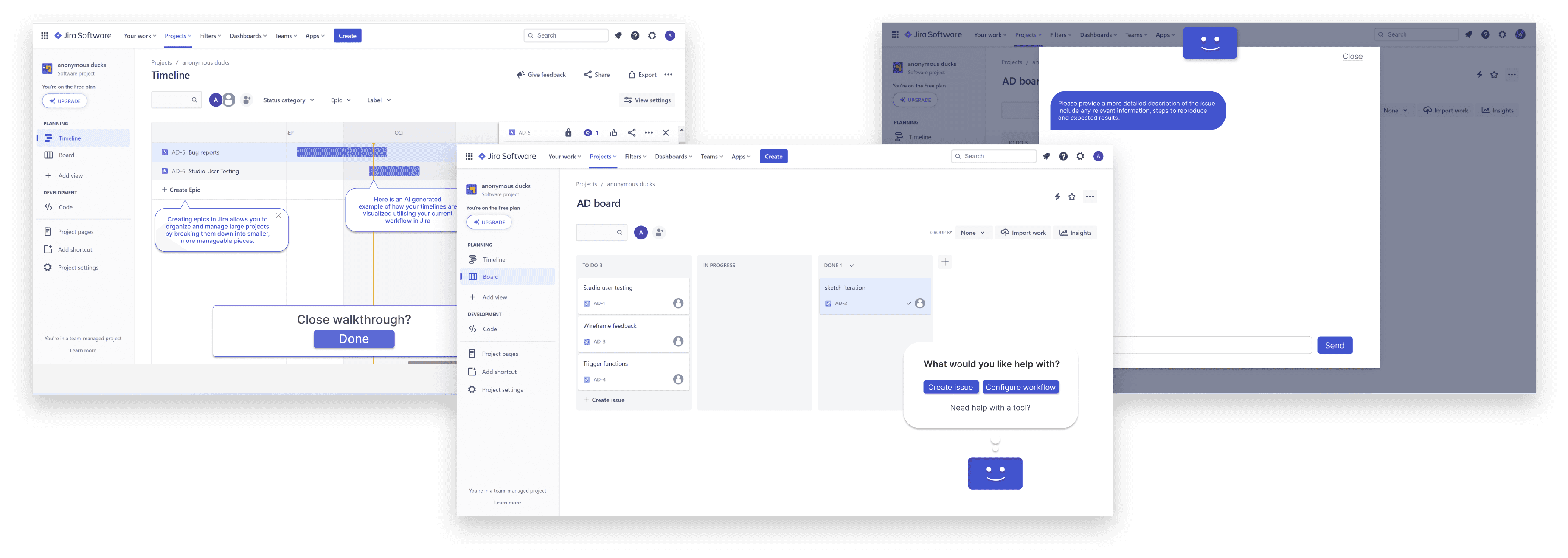
Role
UX/UI Designer, UX Researcher
Tools
Figma, Miro, Jira, Canva
Duration
October 2023 (3 Days)
OVERVIEW
"Jira Companion" is a concept designed for the SUEDE X Atlassian Designathon 2023, a competition held by Atlassian in collaboration with Sydney University Experience Design Society (SUEDE). We were tasked to make Jira - a project management tool, more accessible to new users and reduce the learning curve by utilizing Artificial Intelligence. The competition lasted for a total of 3 days.
THE BRIEF
Jira has a steep learning curve
"Today, when people want to start managing work in Jira, they have to learn new concepts and technical terms to get the most out of it. This is unacceptable because everyone should easily be able to get access from Jira. We envision AI simplifying complex tasks, saving people time and empowering teams to drive their mission forward."

DESIGNING THE AGILE WAY
A fully working prototype was meant to be ready and submitted at the end of the designathon, which meant we had a total of 3 days to flesh out the concept; all the way from research and ideation, to testing, iteration, and the final prototype. Hence, an agile methodology was defined to develop our concept quickly at such a short notice. Each step of the process was very quick and at its best pace contributing to the development of the final concept. The agile methodology process is as shown below

RESEARCH
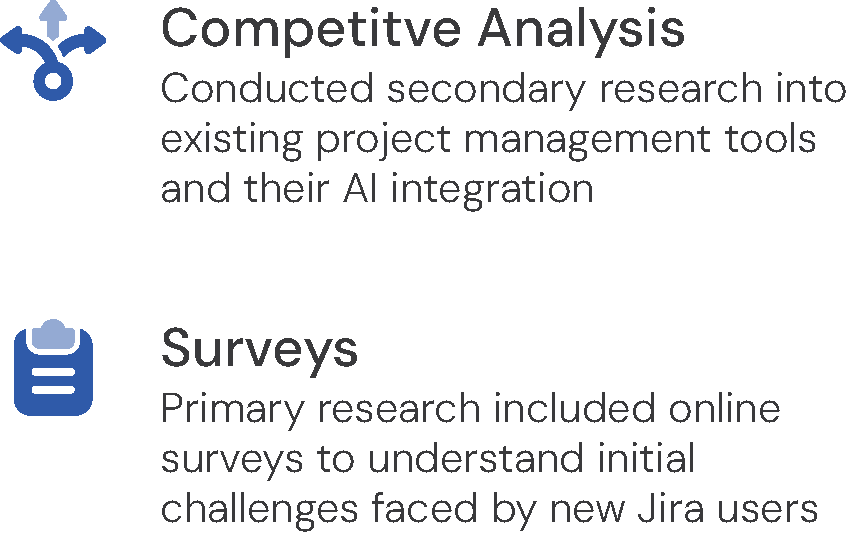
Our research phase started off by conducting a competitive analysis. This allowed us to compare the features offered by competitor project management tools and also evaluate how competitors integrated AI technologies into their platforms to enhance user experience.
This was followed by conducting surveys on our target users (newly inducted Jira users) to get quantitative data on their pain points. Surveys were the preferred method of data collection in this case as it was the quickest way to gather a large volume of data given our extremely short timeframe.
COMPETITIVE ANALYSIS
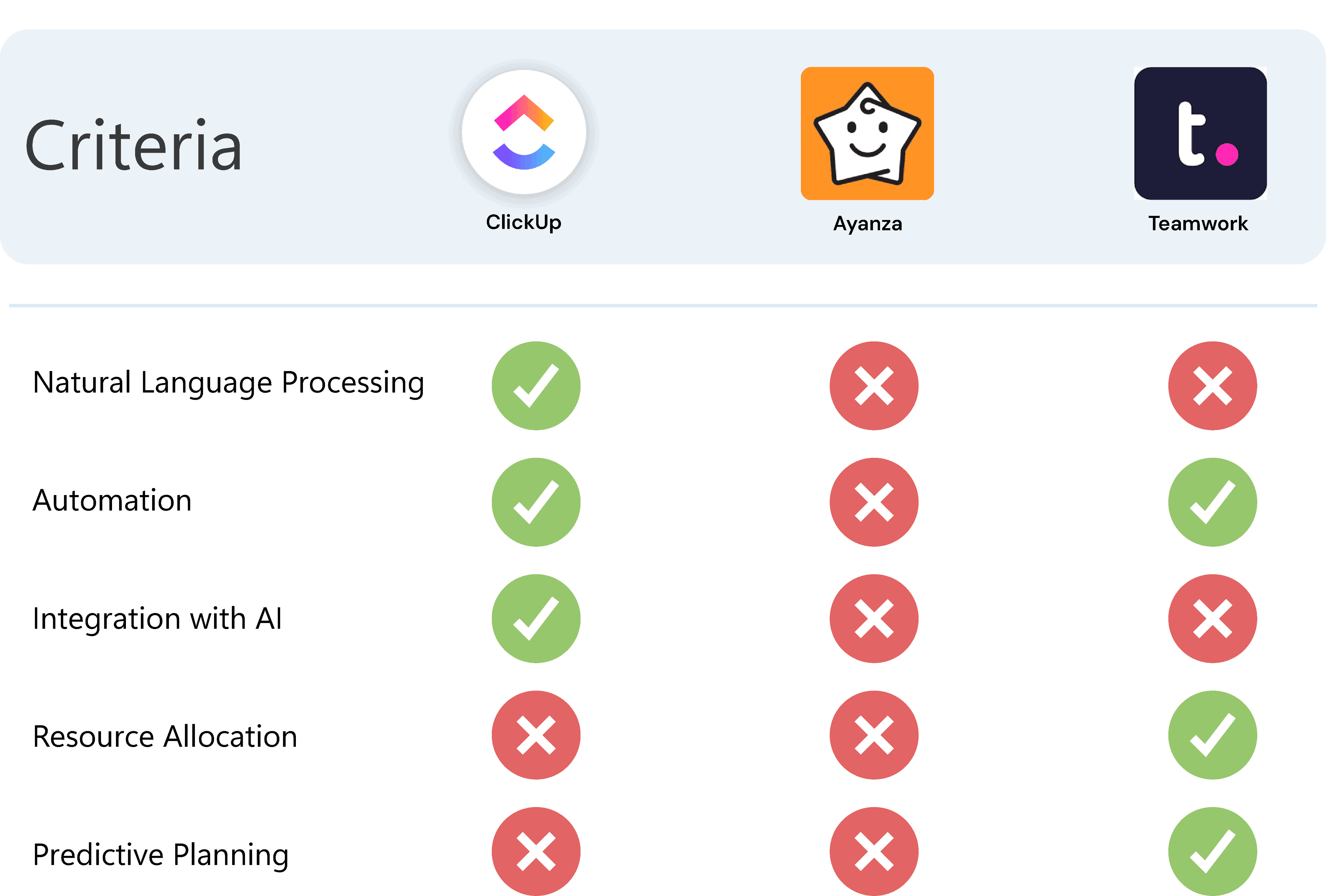
ClickUp
Offers basic automation and NLP features but lacks advanced AI capabilities.
Ayanza
Focuses on visual brainstorming and collaboration tools but doesn't have AI-driven features.
Teamwork
Offers AI integration for project management but lacks in NLP driven user interactions.
Addressing these gaps would require the integration of AI driven features such as natural language processing and predictive automated workflow creation into Jira.
SURVEY FINDINGS

KEY IDENTIFIED ISSUES
Upon synthesizing our questionnaire data, we found new Jira users faced 3 main issues, as shown below

PROBLEM REFRAMENT/REFINING
After synthesizing our findings, we revised our initial problem statement to better align with the problem area. This problem reframing allowed us to pinpoint the frustrations faced by our users, and develop a design concept that addressed these specific pain points.

PERSONAS
Our research findings were condensed into 2 different personas to detail the motivations and frustrations of a typical user that was new to Jira. This helped us identify the needs and preferences of the target users in a more human-centric way.
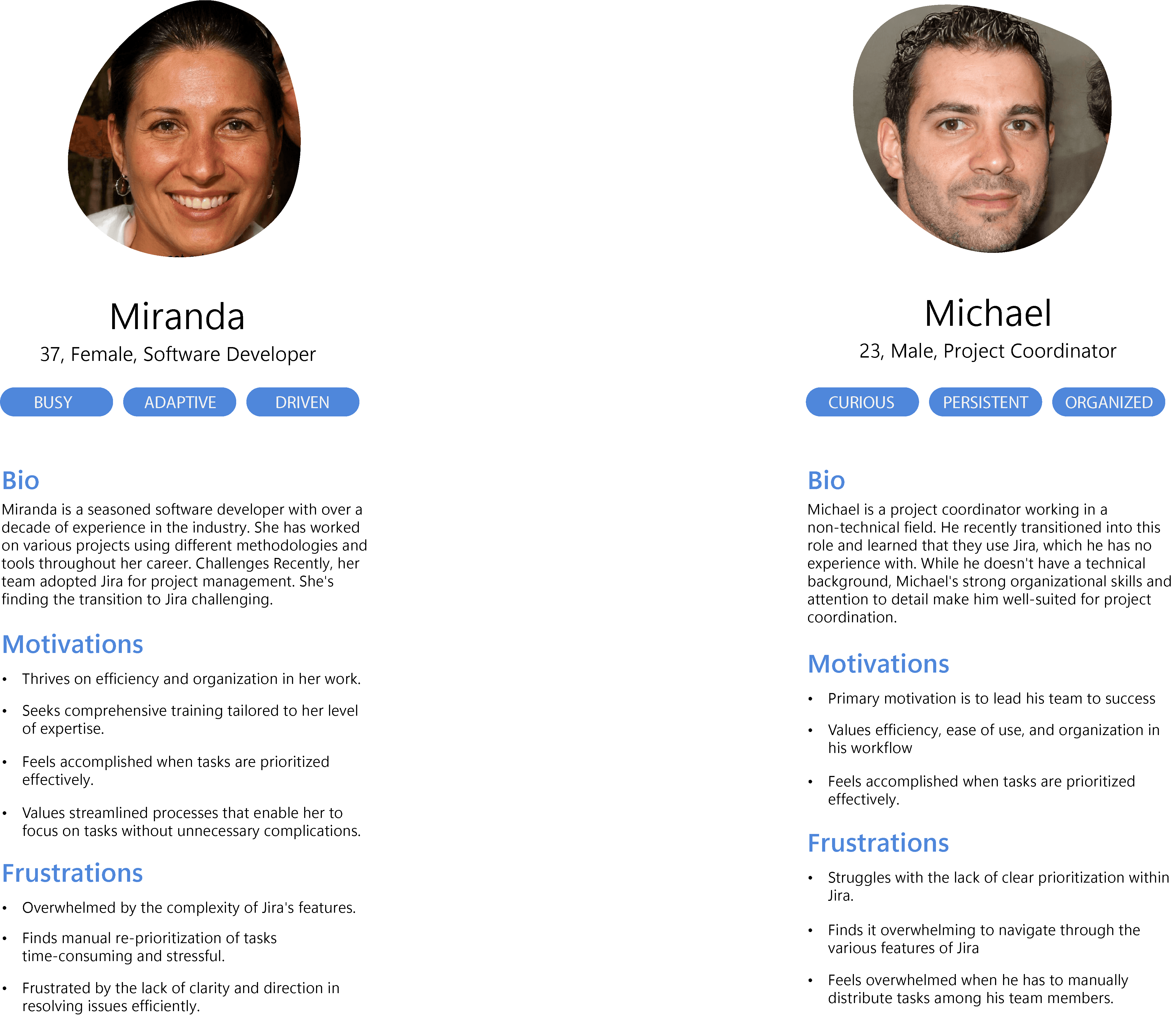
REDESIGN GOALS & VISION
Make it simple, humanize the interface
The overarching goal of this redesign was to make Jira more intuitive and accessible for new Jira users. And so, before delving into the design phase, I established a set of pivotal conditions to shape an efficient user flow.

SOLUTION
For our solution, we chose to implement three new features that directly address the pain points faced by new Jira users

FINAL DESIGN
Automated Issue Creation
Users able to simplify issue creation by asking Jira Companion
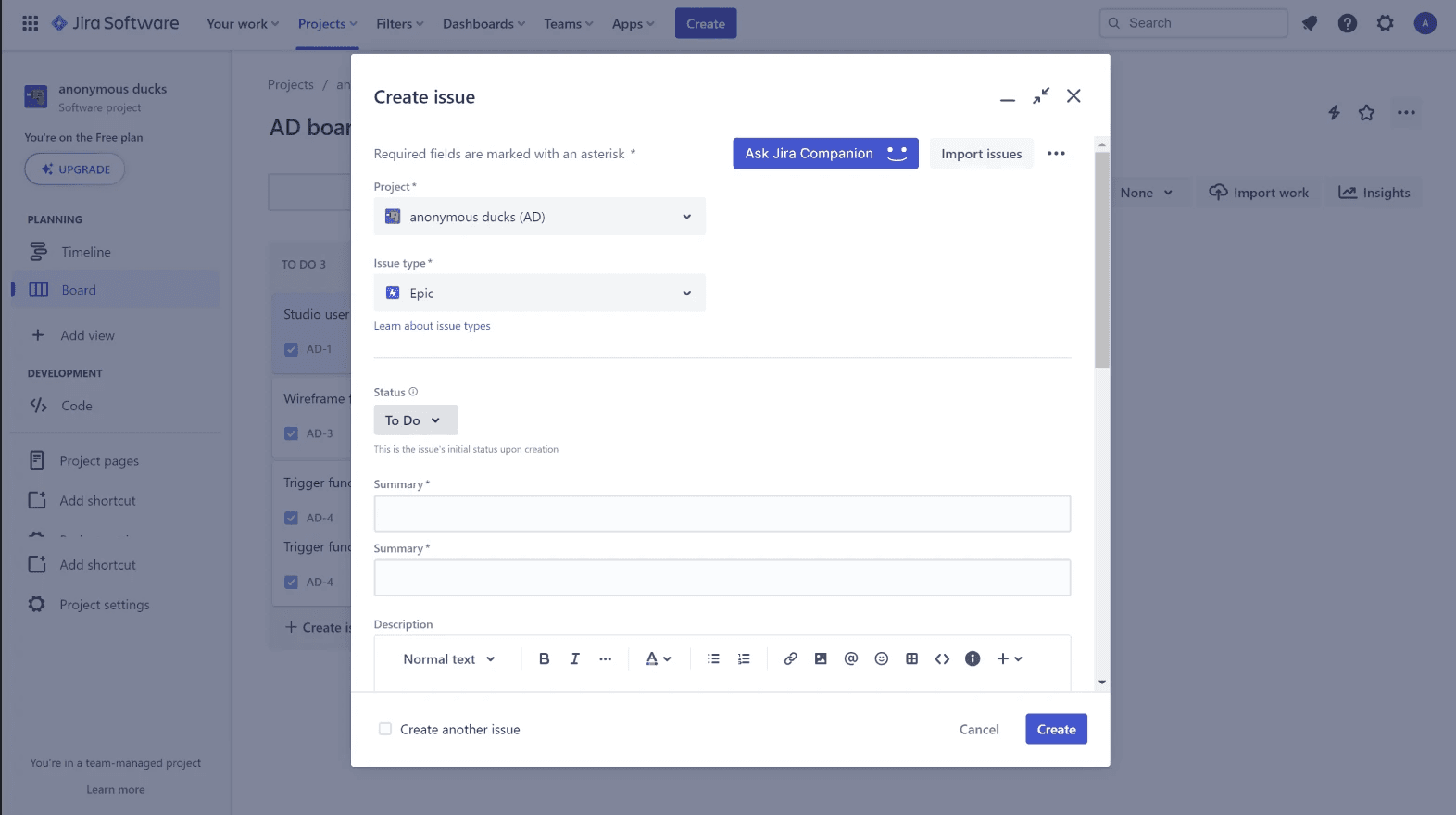
AI Chatbot utilizes NLP to enquire details about the issue, and then generates a template of the described issue
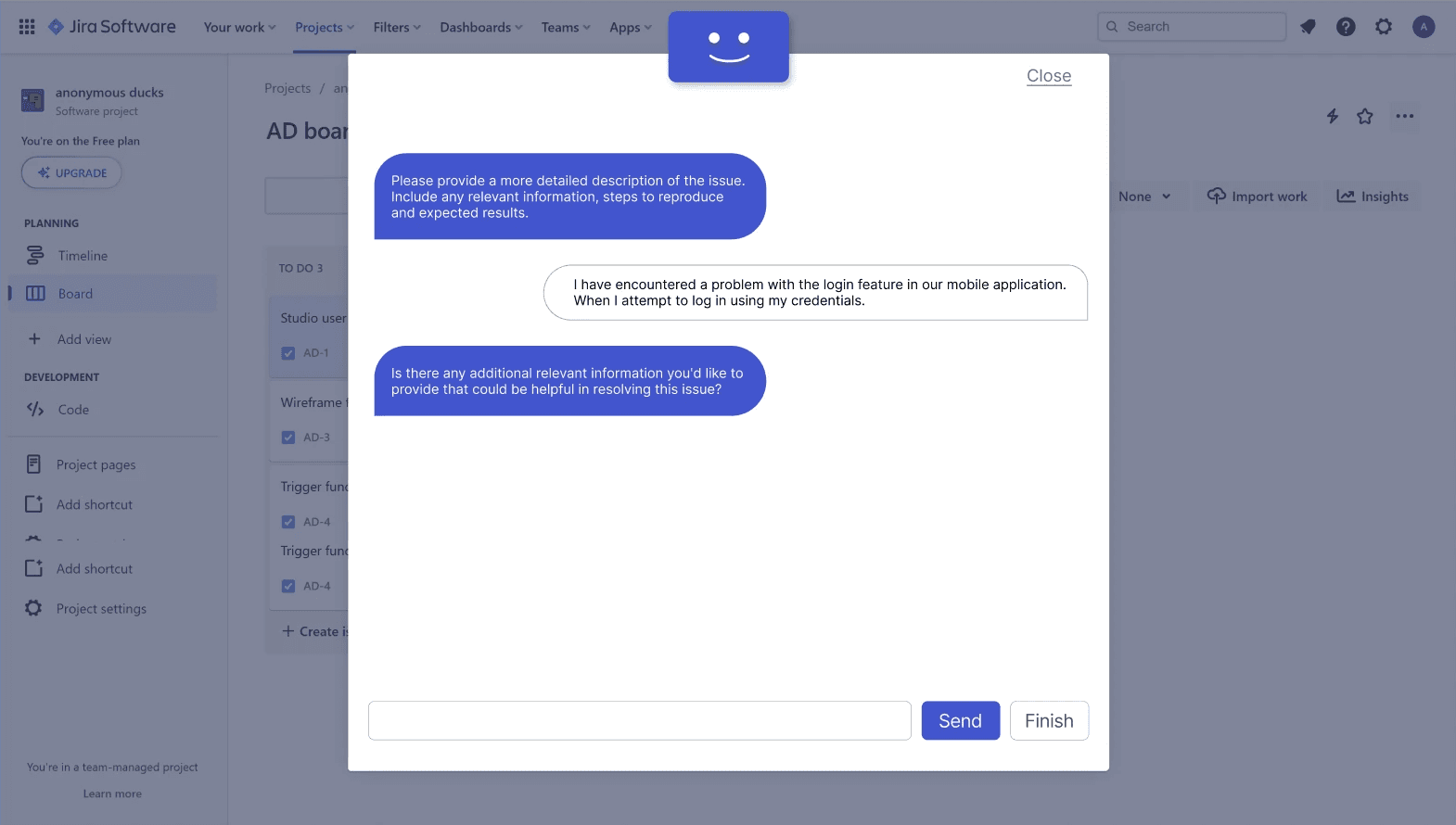
Users are able to further edit this auto-filled template of their issue and finalize issue creation.
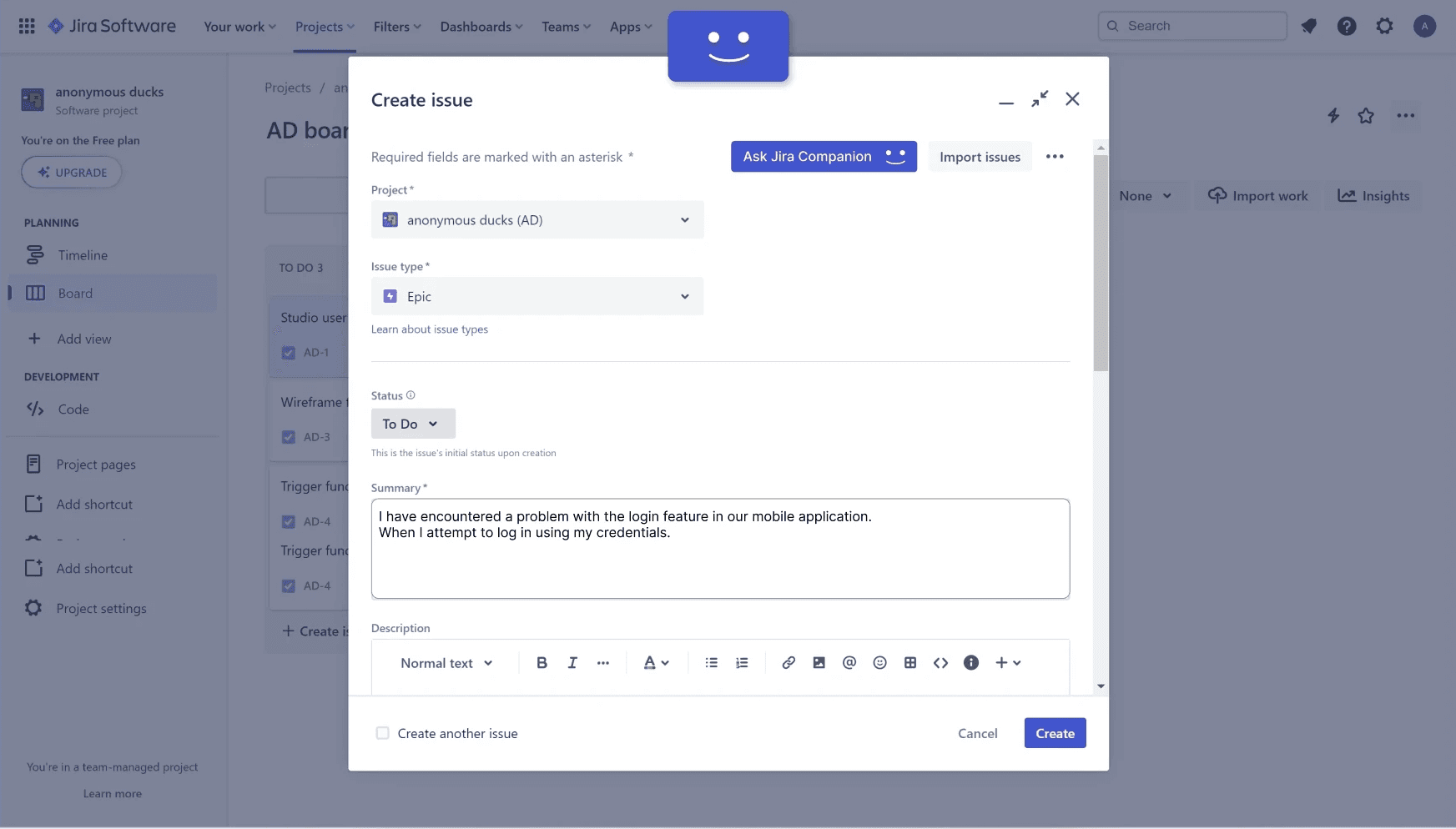
Confirmation displayed after issue creation. This keeps users informed about the status of their action.
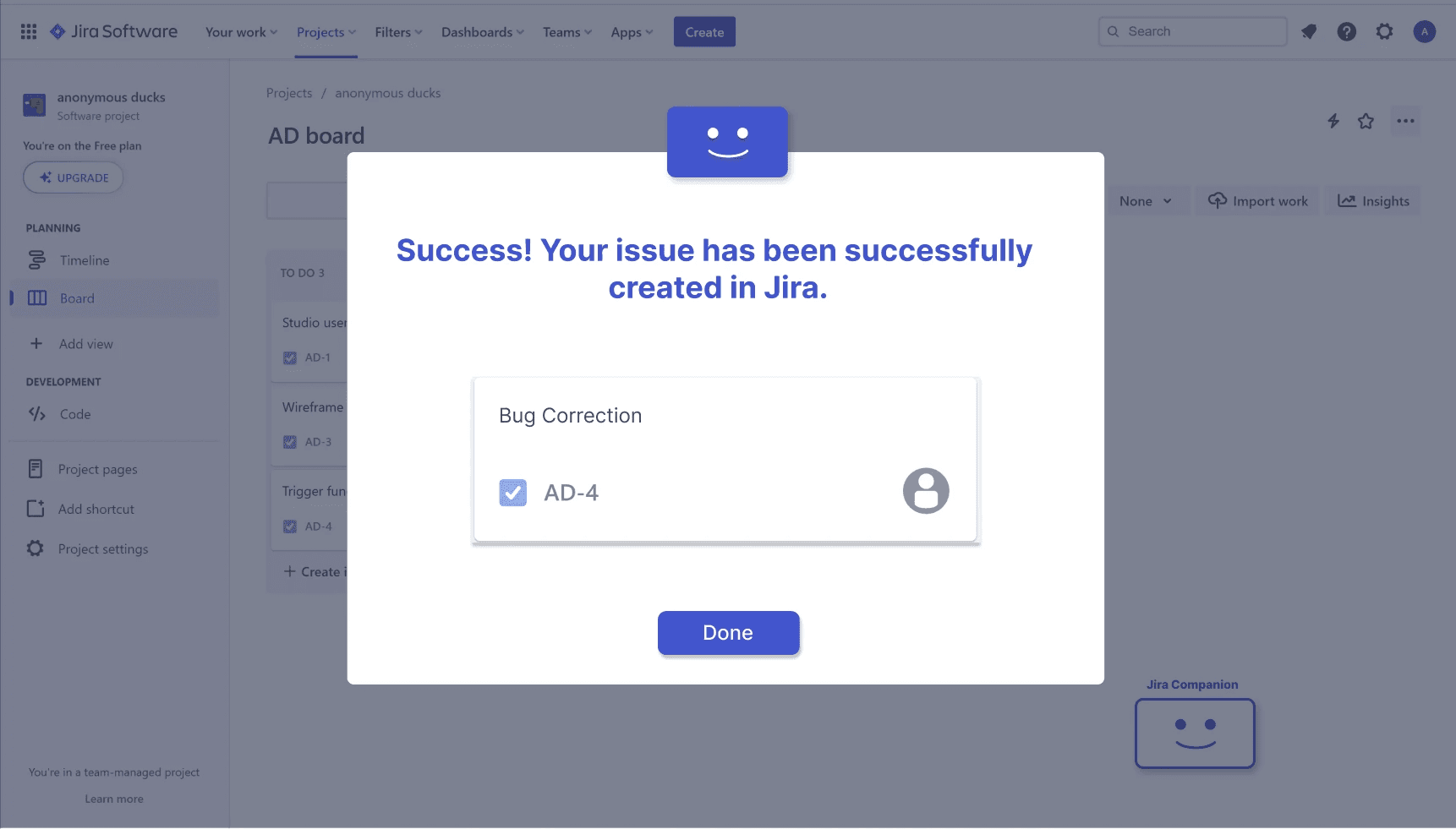
Feature Discovery
Once users click on feature discovery option, they are provided with a prompt that allows them to click on a feature
and know more about it.
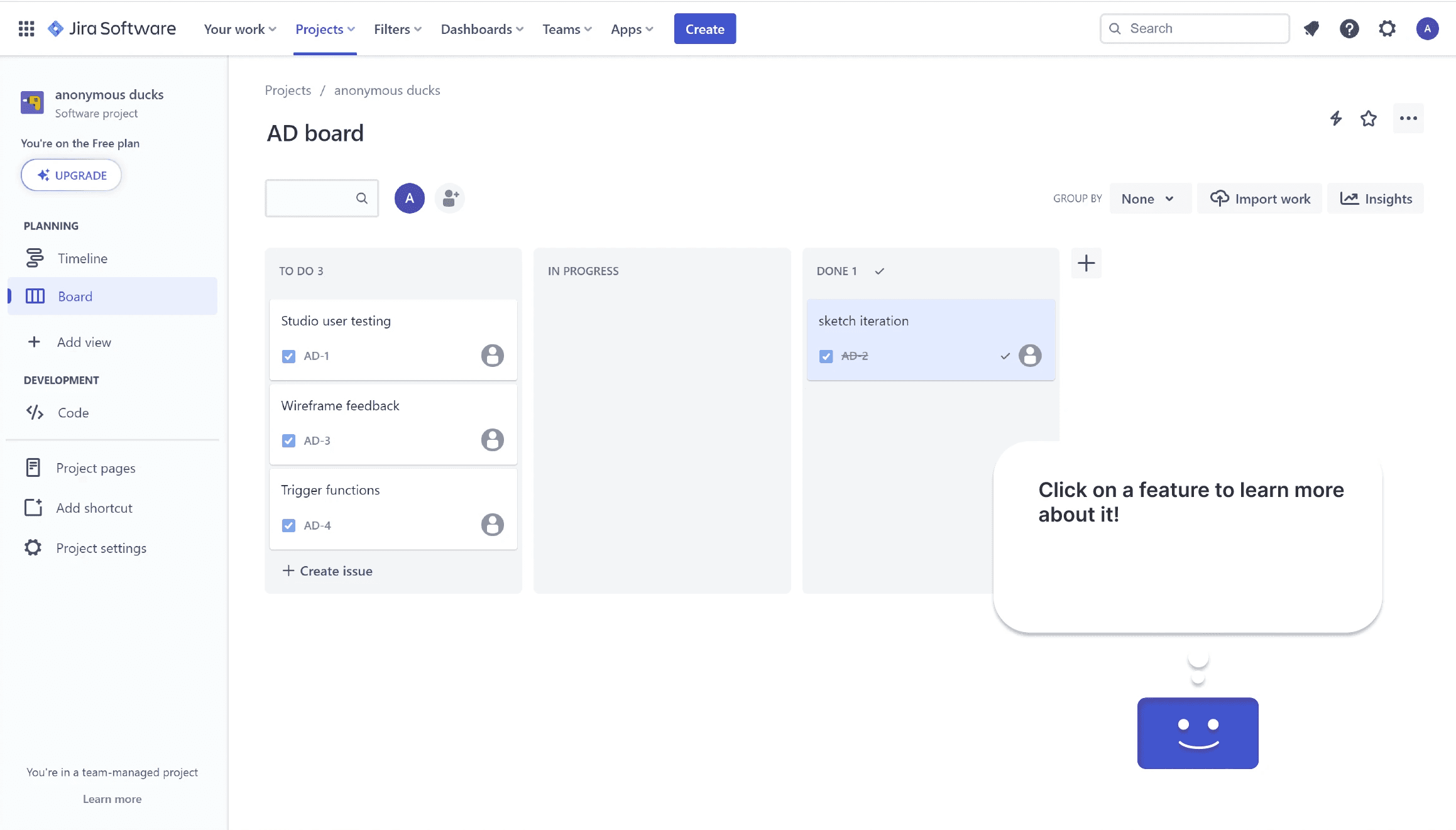
Brief description of selected feature displayed in the form of a pop-out menu.
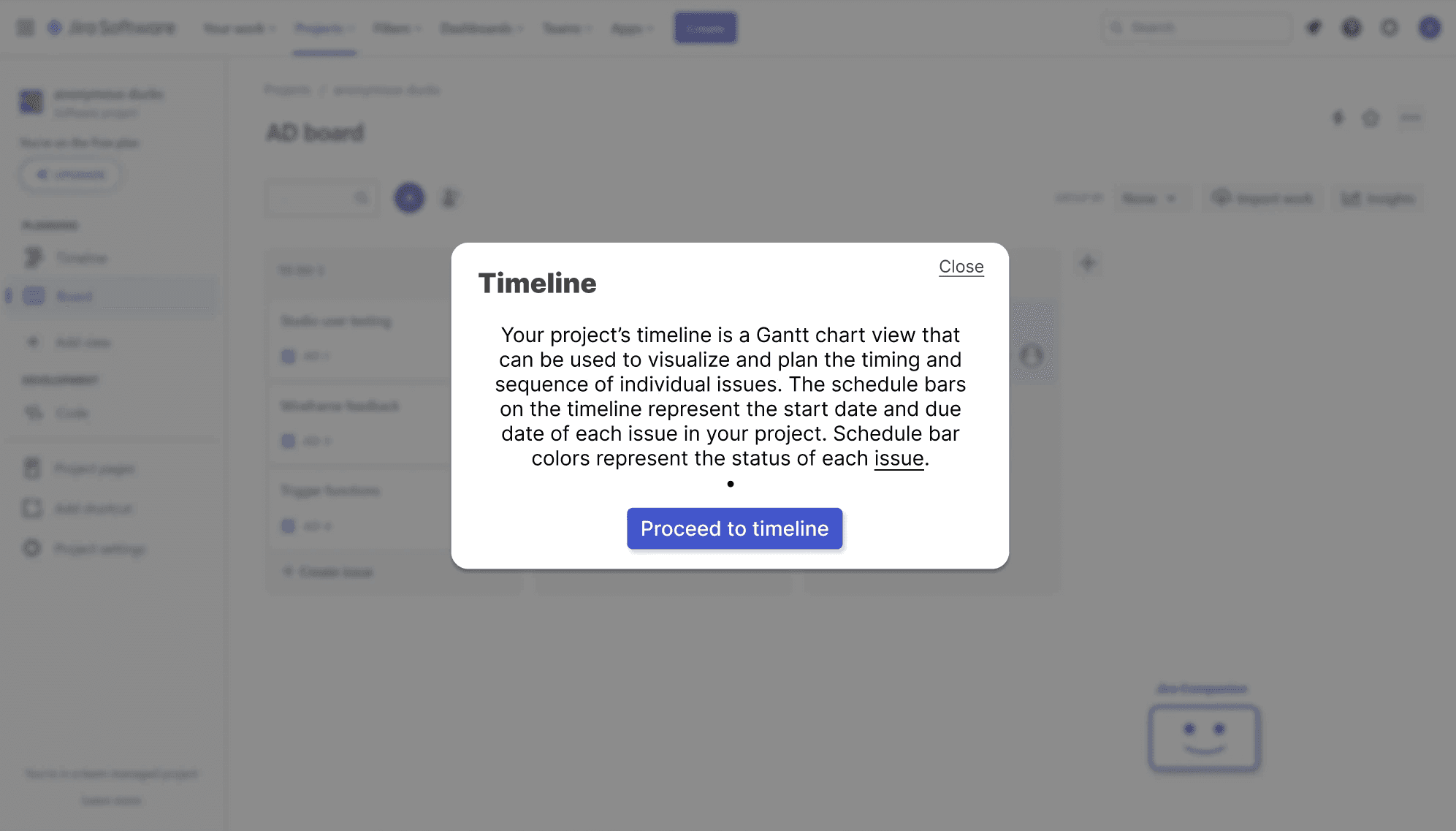
New users can also use the walkthrough feature to familiarize themselves with the selected feature’s interface
